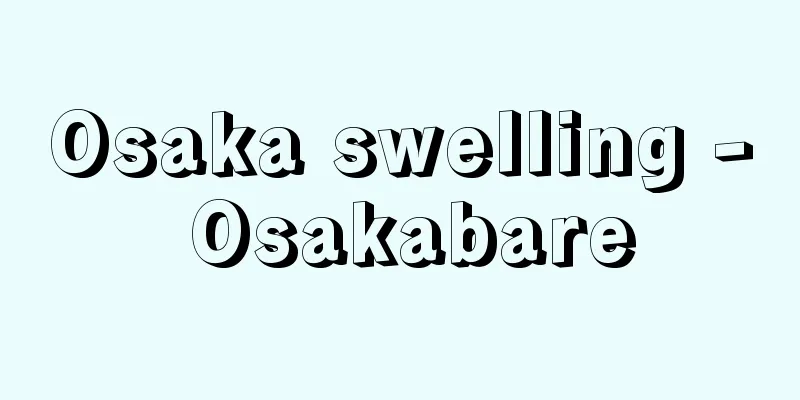Gymnastics - Exercise

|
Gymnastics is a scientific form of physical exercise that is performed for the following purposes: (1) to promote healthy growth and development of the body and to maintain and improve health; (2) to increase muscle strength, develop flexibility and dexterity, and improve athletic ability; (3) to correct physical defects and create a beautiful body; and (4) to help recover from fatigue after sports or work. As a result, there are many types of gymnastics, and they are called by various names depending on their purpose, effect, equipment used, and target audience. Warm-up exercises and organizing exercises are named according to purpose; beauty exercises, medical exercises, and corrective exercises are named according to effect; hand exercises, apparatus exercises, and apparatus gymnastics are named according to the equipment used; school exercises, youth exercises, industrial exercises, and workplace exercises are named according to target audience; and radio exercises and television exercises are named according to the mass media used. In addition, Danish gymnastics, Swedish gymnastics, and German gymnastics are named after the countries where they were founded, gymnastics by Niels Bukh (1880-1950) and Rudolf Bode (1881-1970) are named after their founders, and Sokol gymnastics is the name of the organization, and the types, names, and characteristics of these gymnastics are extremely diverse. [Tadao Kamisako] historyGymnastics is called gymnastics in English and gymnastik in German, both of which come from the Greek word gymnos, meaning "nude," and are derived from the fact that in the Greek era, various sports such as running, jumping, throwing, boxing, and wrestling were performed naked. In the Greek era, gymnastics was mainly technical movements related to combat, but even at that time, the need for harmonious development of the body was understood, and exercises for the trunk, exercises to make the body flexible, and exercises to increase muscle strength through resistance were developed. It is said that in China, around 2600 BC, a health method created in response to the demands of the common people, called "medical gymnastics Chinese method," was already being practiced, and it is said that it was spread by Taoist monks. Today's form of gymnastics was born in the 18th century, and German gymnastics, Swedish gymnastics, and Danish gymnastics are well known. All of them aimed to create strong citizens. [Tadao Kamisako] Japanese GymnasticsWith the promulgation of the school system in 1872 (Meiji 5), gymnastics was introduced into the education of young people in Japan. It was initially set up as "physical arts" in lower-class elementary schools, but the teaching method was not yet clear. The following year, in 1873, the "Taisozu" (Gyōzu) was published by five prefectures, Ibaraki, Aichi, Gifu, Tsuruga (now Fukui Prefecture), and Kyoto, and the word "taiso" (gymnastics) came into general use. In 1878, the Ministry of Education established the Taiso Denshō (gymnastics training school) in Kanda Hitotsubashi, Tokyo, and invited George Adams Leland (1850-1924), the principal of the Boston Normal School of Physical Education in the United States, to select school gymnastics and train instructors. Tsuboi Kanemichi, who served as an interpreter at the time, wrote "Shin-taisoho" (New Gymnastics Method) to introduce modern gymnastics. Then, in 1886, the School Act was enacted, and a gymnastics curriculum was established, adopting Leland's method. The content was centered on regular gymnastics (corrective techniques, bare-knuckle exercises, dumbbell exercises, etc.) and military-style gymnastics (flexibility exercises, apparatus gymnastics, training, etc.). Swedish gymnastics was introduced in 1902 (Meiji 35), and after the school gymnastics teaching guidelines were established in 1913 (Taisho 2), this gymnastics became the mainstream of school physical education. After that, the leading roles in Japanese gymnastics were played by the Danish basic gymnastics of Buch, the natural gymnastics of the Austrian Karl Gaulhofer (1885-1941), and the German Bode's expressive gymnastics, all of which were based on natural movements using rhythm and music. After Japan entered the First and Second World Wars, school education in general became military-oriented, and gymnastics was emphasized as one of the methods of training the nation, along with military training, and was actively practiced under the names of national gymnastics and industrial gymnastics. For a while after the Second World War, gymnastics was neglected due to the wartime trend of disregarding sports, but with the revision of the educational curriculum, physical education became a compulsory subject from elementary school to university, and gymnastics was emphasized again. As international exchange in sports became more popular, particularly with the Olympics, there was a call for developing the physical fitness of young people and improving the basic physical fitness of the nation, and gymnastics classes, health classes, and physical fitness classes were set up all over the country, becoming popular among housewives as well. Points to keep in mind when doing exercises are: (1) to clarify the purpose. Simply moving the body does not count as exercise. The purpose must be clear - is it to recover from fatigue, to warm up for strenuous work or sports, to build muscle strength and flexibility, or simply to maintain health? (2) to consider suitability based on age, sex, health level, physical strength, etc. The content, intensity, duration, and method of exercise will naturally be determined by these two points. The most important thing is to perform each exercise correctly, patiently, and consistently. It is advisable to join a gymnastics class that suits your purpose and receive instruction from an expert. [Tadao Kamisako] [References] | | | | |Source: Shogakukan Encyclopedia Nipponica About Encyclopedia Nipponica Information | Legend |
|
体操は、(1)身体の円満な発育、発達を助けて、健康を保持増進する、(2)筋力を増強し、柔軟性、巧緻(こうち)性を養成して運動能力を向上させる、(3)身体の欠陥を矯正して美しい体をつくる、(4)スポーツや作業後の疲労回復に役だつ、などの目的をもって行う科学的な身体運動である。したがって、体操の種類は多く、その目的や効果、使用する器具、実施する対象などによって、いろいろな名称でよばれている。準備体操、整理体操は目的による、美容体操、医療体操、矯正体操は効果による、徒手体操、手具(しゅぐ)体操、器械体操は使用する器具による、学校体操、青年体操、産業体操、職場体操は対象による、ラジオ体操、テレビ体操は利用するマス・メディアによる各名称である。また、デンマーク体操、スウェーデン体操、ドイツ体操は創始国名、ブックNiels Bukh(1880―1950)の体操、ボーデRudolf Bode(1881―1970)の体操は創始者名、ソコールSokolの体操は団体名で、その種類、名称、特徴は多種多様である。 [上迫忠夫] 歴史体操は、英語でジムナスティックスgymnastics、ドイツ語でギムナスティークGymnastikというが、いずれもギリシア語の「裸体」を意味するギムノスgymnosからきたもので、ギリシア時代には走、跳、投、ボクシング、レスリングなど、いろいろな競技が裸で行われたことに由来している。ギリシア時代のギムナスティークは、闘争に関係をもつ技術動作が主であったが、当時においても身体の調和的発達の必要性を理解して、胴体の体操、身体を柔軟にするための運動、抵抗によって筋力を増強する運動なども開発されていた。また中国では紀元前2600年ころすでに「医療体操漢法」という、庶民の要求によって生まれた健康法が行われていたといわれ、それは道教の僧侶(そうりょ)によって広められたと伝えられている。今日の体操の運動形式が生まれたのは18世紀で、ドイツ体操、スウェーデン体操、デンマーク体操がよく知られている。いずれも強健な国民をつくることを目的としていた。 [上迫忠夫] 日本の体操1872年(明治5)に公布された学制により、日本の青少年教育に体操が取り入れられた。初めは下級小学校に「体術」として設けられたが、まだ教授方式など明確ではなかった。翌1873年茨城、愛知、岐阜、敦賀(現、福井県)、京都の5府県が発行した『体操図』から、体操ということばが一般に使用されるようになった。1878年文部省布達により東京・神田一ツ橋に体操伝習所が設立され、アメリカのボストン体育師範学校長リーランドGeorge Adams Leland(1850―1924)を招いて、学校体操の選定と指導者養成を図った。このとき通訳を務めた坪井玄道(つぼいかねみち)が『新体操法』を著して近代式体操を紹介した。ついで1886年、学校令の制定により体操科教科課程が設けられ、リーランドの方式が採用された。内容は、普通体操(矯正術、徒手体操、亜鈴(あれい)体操など)と兵式体操(柔軟体操、器械体操、教練など)を中心とした。 1902年(明治35)スウェーデン体操が紹介され、1913年(大正2)学校体操教授要目制定以後は、この体操が学校体育の主流をなした。その後、日本の体操に指導的役割を果たしたのは、デンマークのブックの基本体操、オーストリアのガウルホーフェルKarl Gaulhofer(1885―1941)の自然体操、ドイツのボーデの表現体操であり、いずれも律動と音楽による自然運動を主体とする体操であった。日本が第一次、第二次世界大戦に突入してからは、学校教育全般が軍事目的志向となり、体操は国民鍛練方法の一つとして軍事教練とともに重視され、国民体操、産業体操の名のもとに盛んに行われた。第二次世界大戦後の一時期、体操は、戦時中のスポーツ軽視の風潮からなおざりにされたが、教育課程改訂により小学校から大学まで体育が必須(ひっす)課目となり、ふたたび重視された。ことにオリンピックをはじめ、スポーツの国際交流が盛んになるにつれ、低年齢層の体力開発と国民の基礎体力向上が叫ばれ、体操教室、健康教室、体力づくり教室などが全国各地に設けられ、家庭婦人の間にも普及した。 体操実施の留意点としては、(1)目的を明確にすること。単に身体を動かすだけでは体操とはいえない。疲労回復のためなのか、激しい作業またはスポーツの準備運動なのか、筋力増強、柔軟性養成のためなのか、単なる健康保持のためなのか、目的をはっきりさせる。(2)年齢、性別、健康度、体力などによる適性を考えること。以上の2点があり、運動の内容、強度、実施時間、実施方法はおのずから決定される。肝要なのは、個々の運動を正しく、根気強く、継続して行うことである。目的に適した体操教室に入会し、専門家の指導を受けることが望ましい。 [上迫忠夫] [参照項目] | | | | |出典 小学館 日本大百科全書(ニッポニカ)日本大百科全書(ニッポニカ)について 情報 | 凡例 |
Recommend
Artemisia (plant) - Artemisia
...It has a bitter taste, hence the Japanese name...
nephridium
…The kidney is an excretory organ common to all v...
Far North Small Stone Tool Tradition
...the Iyatayet site, located at Denbigh Point, w...
Inferior rectus muscle - Kachokkin
One of the extraocular muscles. Eye socket Cancer ...
Goods and articles - goods and articles
A book on natural history from the mid-Edo period,...
Impressionism Criticism
In 1865, he became a private tutor at Brasenose C...
Public Notice - Kouji Saikoku
A procedure in which, when permitted by law, the c...
Motion aftereffect - Mandarin orange
This phenomenon occurs when, after gazing at an ob...
OSSK - OSSK
...In 1926, "Spring Dance" became popul...
Kinyo Wakashu - Kinyo Wakashu
This was the fifth imperially commissioned anthol...
Bentvogel
...The name is based on the fact that the Dutch p...
Henza Island
An island located in the northeast of the Yokatsu ...
Upnecut - Upnecut
...Buddhism and other Indian religious and philos...
Annette von Droste‐Hülshoff
1797‐1848 German poet. Born into an old baronial f...
Tengu's Claws
A former Japanese name for fossilized shark teeth...









